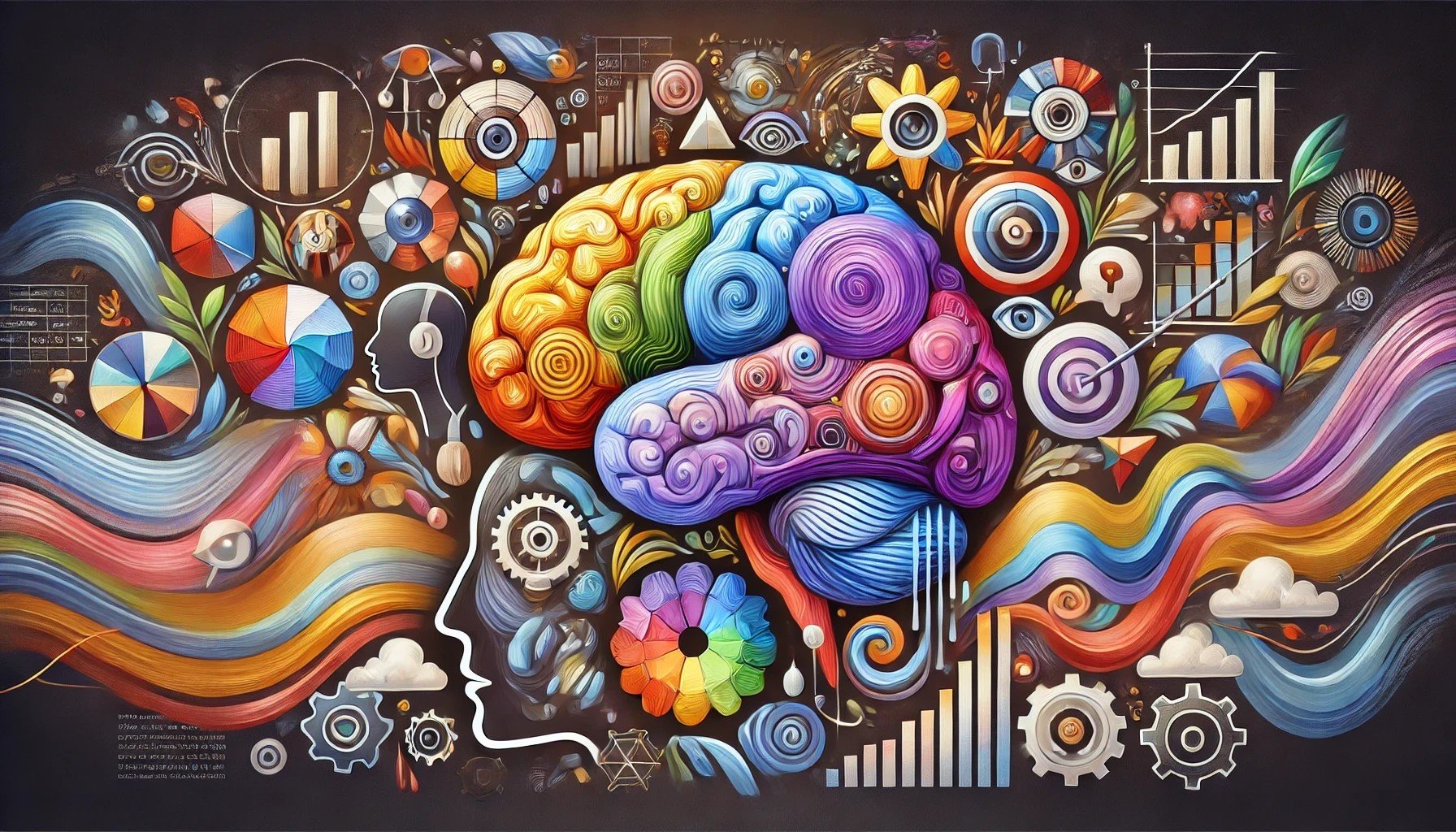Understanding processing styles: how to improve learning, focus, and communication
Reading time: approx. 7 min
Ever been in a meeting or trying to learn something new and thought, "Why is this not clicking for me?"
Maybe someone’s giving you instructions, and it’s like they’re speaking another language. Or you’re reading a manual for the fifth time, and it still feels like trying to fold a fitted sheet—frustrating, confusing, and not happening.
Here’s the truth: it’s not that you’re not trying hard enough or that you “don’t get it.” It’s probably because the way the information is being delivered doesn’t match how your brain processes it.
And trust me—you’re not alone. Many of us face common learning challenges or struggle with information-processing barriers.
We all have ways of processing information that work better for us—and ways that leave us staring at the wall, wondering where our brain went. When you understand your mix of processing styles, you can not only learn better but also communicate your needs clearly to others.
And that? That changes everything.
Understanding your processing style might just be the key to improving workplace productivity, and communicating your needs—without frustration. Let’s dig into why this matters, what processing styles really are, and how you can put this knowledge to work.
Why processing styles matter (or why miscommunication happens)
Let me paint a picture:
You’re in a team meeting. Your manager spends 15 minutes explaining a new process out loud.
When they finish, everyone nods enthusiastically, but you’re still piecing things together. You ask them to clarify, and they repeat it—still verbally.
You leave feeling overwhelmed, frustrated, and a little embarrassed for needing “extra help.” Sound familiar?
Here’s the thing: your brain might just need a different “frequency” to tune into the information. If your preferred style is visual, you probably needed a diagram. If you’re kinesthetic, you might have needed to physically try the steps.
It’s not about being a bad listener—it’s about mismatched communication.
When your processing style doesn’t align with the way someone shares information, it feels like trying to open a locked door with the wrong key.
The good news? You can learn to ask for the right keys.
What are processing styles and how do they work? Different types explained.
In a nutshell, processing styles refer to how someone receives and processes information to make sense of it. Most of us are multi-sensory processors, meaning we mix and match styles depending on the situation.
Here’s a breakdown of the main styles:
Visual: you process best through images, charts, diagrams, or anything you can see.
Auditory: you prefer spoken explanations, discussions, or listening to instructions.
Kinesthetic (including tactile): you process by doing—through movement, touch, or hands-on experience.
Verbal: you thrive when reading or writing things out. Words help you clarify your thoughts.
Logical (analytical): you like patterns, sequences, and breaking things into steps to understand them. You also need the bigger context to process information effectively.
But there’s more. Some people need specific environments to process information fully:
Social: you process information by brainstorming or talking it out with others, often relying on the group's energy to stay engaged.
Solitary: you might be more intuitive in piecing things together (even if you can’t immediately explain how you got the answer) and prefer to process information alone through reflection.
Think of these as tools in a toolbox. You might prefer one tool for most tasks, but sometimes you need to combine tools to get the job done.
How to use your processing style. Actionable strategies for focus and improved communication
Here are some practical tips on how to improve focus and communication:
Understand your own processing style(s).
Recognize when you’re struggling because of a mismatch.
Advocate for yourself or adapt your approach to get what you need.
1. Figure out your style (or mix)
Start by reflecting on past experiences:
When have you learned something really well? Did you need to see it, hear it, try it out, or write it down?
When do you feel most stuck? Do verbal instructions fly over your head? Do written steps feel like gibberish?
I once worked with a client—let’s call her Emily—who felt frustrated in meetings. Her manager always explained projects verbally.
While Emily could focus on what she heard, she couldn’t truly understand the instructions until she saw everything written down.
Once she understood what she needed and started asking for presentations to be sent before meetings, her contributions improved, and her career picked up
2. Adapt how you learn or communicate
Here’s how you can tailor information to your style:
If you’re visual: ask for diagrams, flowcharts, or written steps. Use mind maps or take visual notes.
If you’re auditory: talk things through, record instructions, or use text-to-speech tools.
If you’re kinesthetic: move while learning. Write, pace, or try the task yourself. Ask for a walking meeting if you're in the office.
If you’re verbal: teach someone else the concept or use a voice-to-text transcription tool like Otter.ai to talk out your ideas.
If you’re analytical: ask for the bigger picture, the context. Break complex ideas into smaller steps, look for patterns, or outline your process.
If you’re social: Brainstorm, ask questions, and collaborate—but ensure the people you do this with also thrive on this approach.
If you’re solitary: schedule quiet reflection time, request agendas in advance, and carve out time to organize your thoughts post-meeting.
3. Advocate for your processing style at work and at home
This is the game-changer: learn to ask for information in the style that works best for you. For example:
Instead of saying, “I’m confused,” try: “Can you draw that out for me?”
If written steps overwhelm you, say: “Could we talk this through together?”
After a presentation, request a recording, diagram, or checklist to reinforce what you’ve learned.
A real-life example: communication that clicks
A former client, Alex, struggled with verbal instructions in meetings. As a visual processor, Alex often felt overwhelmed and unsure of priorities.
Here’s what happened:
Alex started requesting diagrams and flowcharts.
Together with their manager, they implemented a kanban board to visualize tasks.
The result? Alex’s performance improved, their stress levels dropped, and their manager noticed a big difference.
Alex didn’t need to “work harder”—they just needed to work in a way that matched their brain.
Takeaway: work with your brain, not against it
At the end of the day, processing isn’t one-size-fits-all, and neither is communication.
If you’ve ever thought, “Why can’t I just get this?” remember this: you’re not broken—you just have to try differently. The next time you feel stuck, ask yourself:
What do I need to make understanding this easier—a diagram, a conversation, or hands-on practice?
How can I communicate my needs clearly?
When you stop fighting your brain and start working with it, everything becomes clearer.
Whether you’re processing something new or explaining your needs to others, honoring your style can help you focus better, reduce frustration, and ultimately thrive.





